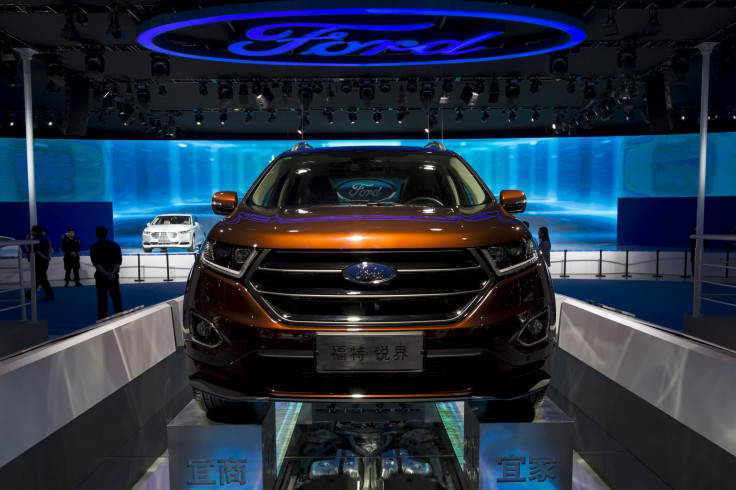SUV Sales Are Booming, Why Are Ford's Slumping?

The good news is that Ford Motor Company (NYSE:F) is still seeing strong demand for its highly profitable full-size pickups.
This article originally appeared in the Motley Fool.
Ford sold 84,639 of its F-Series pickups in the U.S. last month, up 11% from a good year-ago result. That gain helped Ford eke out an 0.7% overall year-over-year sales gain.
The not-so-good news is that Ford's SUV sales fell last month. That wasn't a fluke. Consumer demand for SUVs is surging, but Ford isn't finding the sales growth you'd expect from the trend. What's going on?
Ford lost a bit of market share last month
Ford's 0.7% sales gain trailed the overall U.S. market's gain, meaning that Ford lost a bit of market share. U.S. light-vehicle sales likely rose about 4.7% in May, according to an Automotive News estimate. (It's an estimate because market leader General Motors now reports its U.S. sales totals quarterly instead of monthly.)
At this point it's no surprise that Ford's sedan sales are down. Sedan sales have fallen sharply across the industry as buyers continue to migrate to crossover SUVs. But if you haven't been watching closely, it might seem surprising that Ford-brand SUV sales fell 0.7% last month.
Consider this: If not for the new EcoSport, which wasn't offered in the U.S. at this time last year, Ford's SUV sales would have fallen about 8% in May.
What's the problem with Ford's SUVs?
The problem is that the Blue Oval has hit the tough part of its new-product cadence. Demand for crossover SUVs has soared, but right now, Ford's high-volume entries — the Escape and Explorer — are among the most dated in their market segments.
The current-generation Escape dates to 2013, and the Explorer dates all the way back to 2011. Both were strong entries when they first appeared, and both have been updated more recently. But both have lost ground to newer, fresher rivals.
That's especially true with the elderly Explorer. The Ford mainstay is still one of the best-sellers in its segment (midsize three-row crossover SUVs) despite its age — a tribute to the strength of the basic design and the quality of Ford's updates.
But while the Explorer is still selling well, its sales aren't growing. Demand for three-row crossovers has been booming, and Ford isn't capturing any of that growth. On the contrary: Explorer sales are down this year while several newer rivals have posted big gains.
How Ford can — and will — change this
Cutting prices to boost sales isn't likely to be the answer. Former Ford CEO Alan Mulally set a rule that his successors have so far upheld: When faced with declining demand for a model, Ford reduces supply rather than cutting prices, in order to preserve profit margins (and residual values) as much as possible.
What Ford really needs, of course, is some all-new SUVs to draw more buyers to its showrooms. They're coming, but not immediately: All-new versions of the Explorer and Escape will arrive in 2019, along a refreshed version of the Edge and an all-new off-road SUV that will revive the Bronco nameplate.
Those three new models should give Ford's U.S. sales a substantial boost, assuming that the economy stays reasonably strong. Several other new Ford SUVs and crossovers are expected to follow over the next couple of years as Ford continues its shift away from sedans in North America.
Ford's decision to replace most of its North American sedan models with SUVs has been a controversial one. But given market trends, and CEO Jim Hackett's push to boost Ford's profit margins, it's an understandable one in context.
Long story short: Ford shareholders will have to be patient for a few more quarters, but good news is on the way.
John Rosevear owns shares of Ford and GM. The Motley Fool recommends Ford. The Motley Fool has a disclosure policy.




















